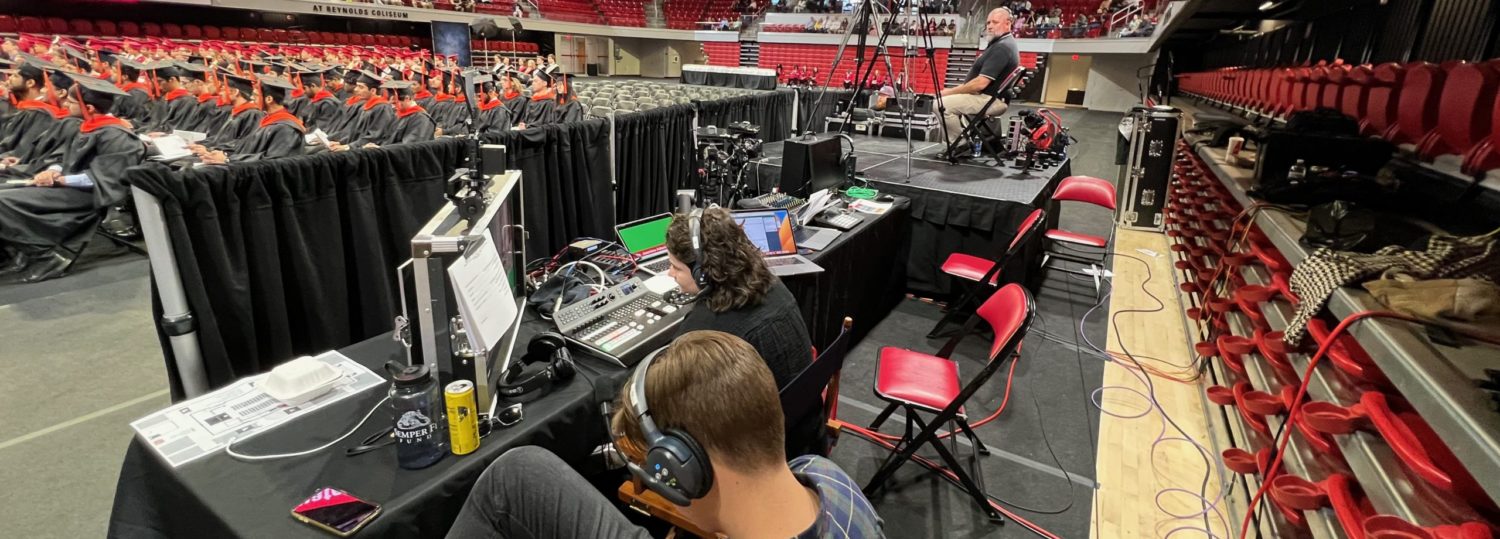Should I shoot or should I pay?
The expectation for video services is more important than ever. The communicator will likely be asked to fill these requests. If the department does not have a budget, and the communicator can confidently use the equipment, ECE+CS has video equipment for events and live streams available for loan–there are some details on this evolving post. If the department does have a budget for video services, it may be best to hire outside help. WolfBytes is an on-campus service that can cost about $2,000-$4,000 to live stream events such as Hall of Fame and graduations.
What gear should I be trying to purchase?
This varies based on you and your department’s priorities (and budgets), however, for handiness, ECE maintains a B&H Photo/Video wishlist of their current recommendations for university communicators. Note that this list isn’t a “buy everything on it”, but rather “these are recommendations for this category of product.” Note that B&H offers substantial education discounts on most items, which is reflected when purchased in Marketplace. For general reference, the actual price is typically 10-20% lower than what listed to the public (and on that wishlist).
The vast majority of items on this list are ones owned and operated by ECE communicators, and you’re welcome to swing by and check them out. The remaining ones are either from personal experience or better choices than those made previously.
I need a camera, where do I start?
Most major brands of cameras have great product lines at this point. By and large, most COE groups are using either Sony or Nikon platforms. What follows is opinion:
Sony Alpha (Charles Hall, ECE)
Sony was effectively the first to roll out mirrorless camera platforms (as compared to D-SLR). Mirrorless are generally much lighter, and now on parity with D-SLR for speed. The Sony Alpha family of cameras has a fit for each level of budget or purpose—and share the E-mount lenses. Cameras such as the a6400 are small and light, use a crop sensor (smaller sensor), and have no limit to video recording length—they’re also relatively cheap, and very suitable for student workers. Moving up, the a7c is a small full-frame (large sensor) camera, with similar capabilities to the a6x00 series, on a full-frame platform.
Then, you get into a7 territory for full-frame pro-level cameras. These are designed by generations (a7ii, a7iv, etc), and by primary-photo (designated with an “r”—a7r iv) primary-video (designated with an “s”—a7s iii), and generalist (no additional letter—a7 iv).
Generally, the Alphas are very good at low light (which is handy is our poorly lit spaces), and have very effective autofocus.
If you want to try out options, ECE has a6400, a7s ii, a7s iii, and a7r iv models, MSE has an a7s iii, MAE has an a7 iii and an a7 c, and BME an a7 iv.
Nikon (Rob Lasson, ISE)
…
Sigma
Not a camera, but a solid maker of lenses that fit both camera platforms—highly recommend looking at them as options for glass that is typically cheaper than Sony/Nikon branded lenses.
